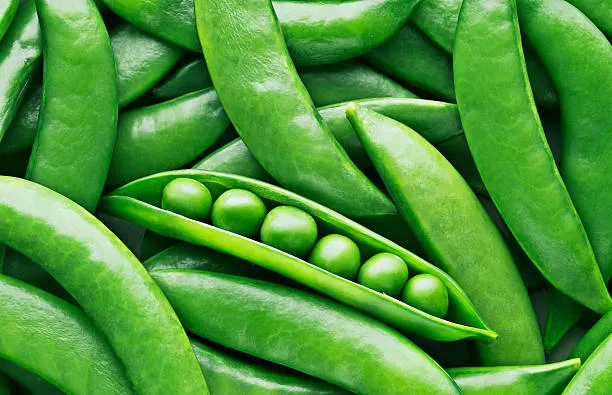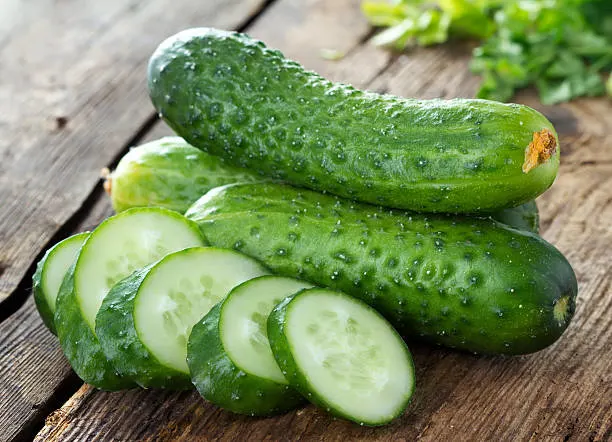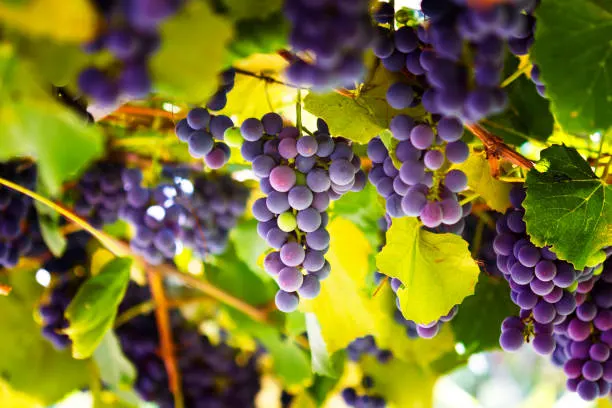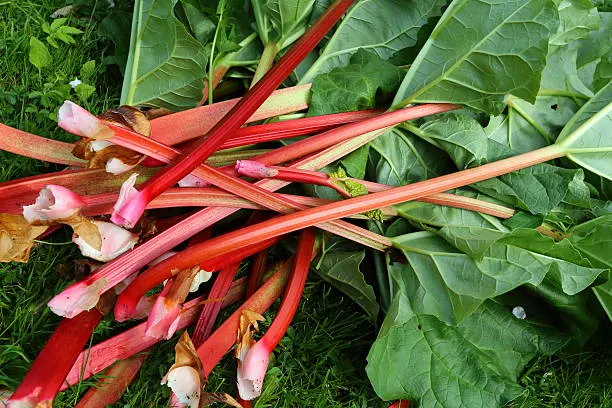Last updated: June 21, 2023
Any links on this page that lead to products on Amazon are affiliate links and I earn a commission if you make a purchase. Thanks in advance – I really appreciate it!
I love to spoil our horses with fruits and vegetables they enjoy eating. But I worry about kids giving them something that could make the animal sick, so I decided to put together this list of what you should (and shouldn’t) feed your equine friend.
Horses can eat much of the same fruits and vegetables that we do, such as apples, carrots, lettuce, watermelon, bananas, and cabbage. However, some natural treats you should avoid feeding your horse; include onions, broccoli, potatoes, leeks, rhubarb, avocados, and tomatoes.
This post will go over the many kinds of fruits and vegetables you can safely feed your horse and the ones you should avoid. In addition, we provided helpful information and pointers on what you should do if your horse consumes anything that it shouldn’t. Continue reading to find out more.

7 Fruits & Vegetables Horses Can Eat
When it comes to feeding horses, they can eat a wide variety of fruits and vegetables. While some fruits and vegetables are more palatable than others, horses will generally eat just about anything that is offered to them.
While the typical diet for a horse consists mostly of hay and grain, fruits and vegetables can be a healthy and delicious way to supplement their diet. Some good options for fruits include apples, carrots, bananas, and watermelons.
As for vegetables, horses can enjoy eating things like spinach, kale, celery, and potatoes. Of course, it’s important to make sure that any fruits or vegetables you give to your horse are washed and free of pesticides. But if you’re looking for a way to add some variety to your horse’s diet, fruits and vegetables are a great option. Here is a look at some healthy snack options for your horse:

Peas
Peas are a delicious treat that horses love to eat and make a great little snack. Peas, despite their size and the fact that they can be eaten, are an excellent source of vitamins A, D, and B-6, in addition to calcium, iron, and magnesium.
Therefore, including peas in your horse’s diet as part of a healthy and varied diet can be pretty beneficial.

Pears
Pears are a favorite treat for horses due to their naturally sweet flavor. Horses can eat pears. It is usually best to feed your horse pears that have reached their full maturity because they are soft and easy for your horse to digest.
How to prepare pears to feed your horse.
Before giving a pear to your horse to eat, you should first take the time to remove the stem and the seeds from the fruit and then chop the pear into bite-sized pieces.

Bananas
Bananas are very safe for horses to consume. Bananas are delicious and healthy snacks that are packed with potassium.
Many horse owners and riders who engage in equestrian sports will feed their horses bananas with the peels still attached between rounds. Eating bananas might benefit athletes like runners and tennis players, which might be valid for horses.

Pumpkin
Pumpkin is a healthy and delicious vegetable that may be given to horses, even the seeds, and it is entirely safe to do so. There is a possibility that the flavor of pumpkin does not appeal to all horses, while some genuinely adore it.
Pumpkins are a delicious alternative to sugar cubes that may be used in baked goods because of their high vitamin A content and naturally sweet flavor. If you plan on feeding your horse pumpkin, you should always check it for any symptoms of rot or mildew before doing so because these things can be toxic to horses.
First, chop the fruit into bite-sized pieces after removing the stem and using a spoon to scoop out the seeds. Thanks to this preparation, your horse will be able to enjoy eating the pumpkin without having to worry about choking on it.

Cucumbers
The answer to those who have been wondering whether or not horses can consume cucumbers is “yes.” This should be a relief to those of you who have an abundance of cucumbers blooming in your gardens.
In addition to the mineral potassium, the vitamins A, K, and C can all be found in high concentrations in cucumbers. Additionally, the skin of a cucumber can offer horses a natural source of nutritional fiber.
Your horse would benefit most from eating cucumbers that have been cultivated organically or at home without the use of any pesticides. This is because these cucumbers do not include chemicals that could be dangerous or even lethal to your horse.

Celery
Celery is a well-known vegetable, but many horse owners are unsure whether or not they should feed it to their animals. On the other hand, Celery has several vitamins and minerals that are excellent for horses, including Vitamin K, manganese, Vitamins B2, B6, and A, as well as high quantities of potassium.
Celery is safe for horses to consume, both the stem and the plant’s leaves. When you feed your horse celery, always cut it into small pieces to decrease the risk of swallowing, just as you would when feeding your horse other types of vegetables.

Grapes
Grapes are one of the many fruits horses can consume without risk, and they are practically at the top of the list of safe options. Grapes are a favorite of horses because of their texture and sweetness.
In addition, there is no need to remove the seeds or chop them up before giving them to your horse. Your horse will have no adverse effects if it consumes the grape and the seeds.
So it doesn’t make a difference whether you buy seedless grapes; horses will be fine eating either kind.
Below is an interesting YouTube video from “Ask the vet” about what treats horses should and shouldn’t eat.
7 Fruits & Vegetables Horses Cannot Eat
Fruits and vegetables are an important part of a healthy diet for horses. However, there are some that horses should avoid. For example, horses should not eat avocados, as they contain a compound that can be toxic to horses.
In addition, horses should not eat garlic, onions, potatoes, or tomatoes, to name a few. Below are some common fruits and vegetables you should avoid feeding your horse, along with an explanation of why they are harmful.

Garlic and Onions
Plants belonging to the “allium” family, which includes vegetables like garlic and onions, are collectively referred to as “alliums.” (Chives, leeks, and shallots are all members of the same plant family called allium.)
Horses should stay away from these plants in general since they can cause harm to the red blood cells in their bodies and cause disease.

Tomatoes
Tomatoes may be delicious and beneficial to people’s health, but they are not good for horses to eat. The tomato plant contains atropine, hyoscyamine, and solanine, which are poison to horses.
Eating tomatoes can cause a horse to colic and even die. However, they need to consume a lot of tomatoes for it to be harmful, and most horses disdain their taste, so the risk is low.

Avocados
Not a single part of the avocado fruit or tree is safe for horses to eat. This includes the peel, the stone, the leaves, and even the tree bark. Eating avocados can result in a horse having an exceedingly erratic heartbeat, constricted breathing, colic, and death in the most severe cases.

Broccoli, Cabbage, And Cauliflower
These foods are all cruciferous vegetable family members, and each contains a form of sugar known as raffinose. Raffinose is the sugar responsible for intestinal gas. Regarding people, passing a little gas isn’t a big deal, but horses can experience excruciating abdominal discomfort due to a condition called colic caused by gas.
In extreme circumstances, consuming excessive amounts of these vegetables can be lethal.

Potatoes
Potatoes, especially in their raw form, should never be given to a horse because they come from the poisonous Solanaceae plant family. However, potatoes in any form should be avoided entirely.
The most dangerous potatoes are those that are still green or rotted, as the chemical makeup of these potatoes can lead to toxicosis. In addition, they present a significant risk of choking if consumed entirely.

Persimmons
We have a large persimmon tree at our house. They are sweet and bountiful, so the kids wanted to share them with our horses. However, we learned they can be very harmful.
Tannins are found in this fruit, and horses’ stomachs are not equipped to handle them adequately. Tannins can cause a sticky mass in horses’ stomachs and, if left untreated, can lead to ulcers and, in extreme circumstances, even ruptures in the stomach.

Rhubarb
The chemicals in rhubarb leaves can cause severe kidney damage and, in some circumstances, complete kidney failure, leading to death.
Rhubarb leaves are a known carcinogen. In addition, it can also wreak havoc on the digestive and urinary systems by causing an electrolyte imbalance, ultimately resulting in renal failure.
Even though rhubarb stems do not contain any poisonous chemicals, horses must never consume any part of this plant.
How Do You Prepare Fruits And Vegetables Suitable For Your Horse To Eat?
The best approach to incorporating fresh fruits and vegetables into your horse’s diet is to ensure that the product is clean and cut into small, easily digestible pieces. The size of them might range from a grape to an olive.
Even though they can consume whole apples, whole carrots, and other complete fruit items, certain horses tend to devour them in seconds. This could result in choking. Cut the fruit into manageable pieces and then sprinkle it on top of the feed you provide to your horse.

Are You Supposed To Peel The Vegetables And Fruits?
When it comes to horses, the peel is frequently the most delicious portion! Cantaloupe, watermelon, and pumpkin rinds are all tasty horse treats. They will consume banana peels, carrot peels, zucchini peels, and squash peels, among other vegetable peels.
Although some sources will instruct you to remove the ends of bananas, squash, and zucchini and chop the ends off of carrots, this is not necessary. Apple cores should be thrown away. Your horse won’t have any trouble eating these bits and will enjoy them very much.
If you want to learn more about horse foods, read this article: The Human Foods Horses Can and Cannot Eat.

Can Treats Cause My Horse to Colic?
Treats are supposed to be consumed in modest amounts rather than in large numbers. Horse Colic can be caused by eating vast quantities of any food. Most horses should be able to handle a handful of grapes, a single pear, or a couple of slices of watermelon without any problems.
It’s best to slowly introduce new foods to your horse’s diet. This will help prevent digestive upset. When giving a baby food in rapidly increasing amounts, you run the risk of causing colic, but you also need to be aware of their allergies.
You have no way of knowing if your horse has some strange allergy to one or more of these items, and it’s possible that they could have all of them. If you introduce new meals to your horse one at a time and do it gradually, you will have a much easier time determining whether or not a specific treat causes your horse to break out in hives or, in any other way, makes him appear “odd.”
What to Do If Your Horse Eats Something it Shouldn’t
Horses are known for their curious nature, and often this curiosity leads them to eat things they shouldn’t. If you find your horse grazing on something toxic, you should do a few things.
- Keep an eye on your horse.
If you notice any of the substance still in their mouth, try and get it out. Next, keep your horse moving. They might decide to lie down; this isn’t good. You must keep them up and walking. If your horse is suffering from significant gas pain or digestive distress, walking them may help relieve some of their discomfort and misery.
- Contact your equine veterinarian.
Describe the issue, and any symptoms you’ve noticed that may be associated with it. Your veterinarian should be able to offer you additional direction and advice regarding how to proceed.
In circumstances like this, it is usually best to err on the side of caution rather than regret. It is in your best interest to seek the guidance of a professional as soon as possible.
- Conduct a thorough investigation of the factors that led to the incident.
Remove all potentially hazardous foods from your horse’s diet, get your horse tested for food allergies, and ensure that no potentially dangerous foods are ever within reach of your horse.

Conclusion – 7 Fruits & Vegetables Horses Can and Cannot Eat.
Horses are curious animals that eat anything they can get their mouths on. This means that it is important for horse owners to be aware of what fruits and vegetables are safe for their horses to eat and also how to prepare these items correctly so they are digestible.
| Fruits & Vegetables | |
|---|---|
| Horses Can Eat | Horses Cannot Eat |
| Peas | Garlic and Onions |
| Pears | Tomatoes |
| Bananas | Avocado |
| Pumpkin | Broccoli, Cabbage, and Cauliflower |
| Cucumbers | Potatoes |
| Celery | Persimmons |
| Grapes | Rhubarb |
It is crucial to select the appropriate fruits, vegetables, and snacks and to consume them in moderation. The number of treats given to them should be minimal, and the treats themselves should be similar to what they are already accustomed to consuming. This will help to ensure that their sensitive digestive systems are not disrupted.
If you’re unsure whether a particular fruit or vegetable is safe for your horse, or if you have any other questions about equine nutrition, please contact your vet for more information.
Reference
- https://www.equestroom.com/blogs/blog/foods-horses-can-and-cant-eat
- https://www.horsefactbook.com/guides/what-horses-should-never-eat/
- https://gustavomirabalcastro.online/en/health/vegetables-and-fruits-for-horses/
- https://majestys.com/blogs/majestys-minute/the-do-s-and-don-ts-of-feeding-horses-and-dogs-fruits-veggies
- https://argentinapoloday.com.ar/blog/horses-feeding-on-fruits-and-vegetables/
